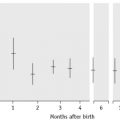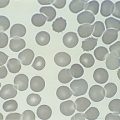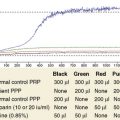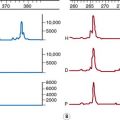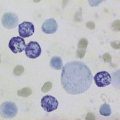Chapter 25 Quality assurance
In the haematology laboratory it is essential to ensure that the right test is carried out on the right specimen and that the correct results are delivered to the appropriate recipient without delay. Quality assurance (QA) is defined as the overall programme for achieving these objectives. It must also ensure adequate control of the pre-analytical and post-analytical stages, i.e. from specimen collection to the timely despatch of an informative report. A QA programme should also include standardization of tests and of instrumentation in order to achieve acceptable levels of precision and accuracy. These objectives represent good laboratory practice (GLP); the mechanism for achieving GLP is encompassed in Total Quality Management (TQM) (Table 25.1).
Table 25.1 Definitions used in total quality management (TQM)
| 1. | Quality assurance (QA) | Overall programme that ensures that the final results reported are correct. QA includes an adequate control of the pre-analytical and post-analytical stages from specimen collection to the timely dispatch of an informative report. A QA programme also includes standardization of procedures and instrumentation. |
| 2. | Quality control (QC) | Measures that must be included during each assay run to verify that the test is working properly. |
| 3. | Proficiency testing (PT) | Procedure to determine the quality of the results generated by the laboratory. Accordingly, PT is a challenge to the effectiveness of the QA and QC programmes and it can be internal or external (also termed ‘quality assessment’). |
| 4. | Internal quality control (IQC) | Monitoring the haematology test procedures to ensure continual evaluation of the reliability of the daily work of the laboratory with validation of tests before reports are released. |
| 5. | External quality assessment (EQA) | Evaluation by an outside agency of the between-laboratory and between-method comparability. It can be organized nationally, regionally or internationally. |
| 6. | Continuous quality improvement (CQI) | Philosophy and attitude for analysing capabilities and processes and improving them repeatedly to achieve the objective of customer satisfaction. |
| 7. | Accreditation | Certification by a duly recognized authority of the facilities, capability, objectivity, competence and integrity of an agency. |
| 8. | Non-compliance | A process which does not comply with a quality system. |
Standardization
Clinical laboratory errors lead to adverse effects on patient diagnosis, therapy and outcomes, also resulting in the inappropriate use of funds. Standardization plays an important role in patient care because it contributes to a decrease in the number of errors, thus improving the harmonization of procedures and comparability between different laboratories. The introduction of the International Standardization Organization (ISO) standards BS EN ISO 9001 (Quality management systems – requirements), BS EN ISO 17025 (General requirements), BS EN ISO 15189 (Medical laboratories – particular requirements for quality and competence) and BS EN ISO 22870 (Point-of-care testing) places quality at the heart of all activities (see also Table 24.8). In the UK, the focus for laboratory practice has been on Clinical Pathology Accreditation (UK) Ltd (CPA), which has evolved to reflect the way service delivery is perceived within pathology and is now linked to UK Accreditation Service. Quality management systems may also include requirements arising from regulations related to blood and tissues and the Good Manufacturing Practice (GMP) guide, while through the ISO standards, there is a move towards international harmonization.
Standardization of procedures and devices used in the haematology laboratory are the concern of the international professional organizations, especially the International Council for Standardization in Haematology (ICSH). The International Organization of Standardization (ISO) and Comité Européen de Normalization (CEN) have also established standards for medical laboratory practice and for the use of in vitro diagnostic medical devices. At a national level, the British Committee for Standards in Haematology (BCSH) publishes guidelines in books, on websites or as journal articles, and in the USA, a wide range of practice guidelines have been published by the Clinical and Laboratory Standards Institute (CLSI) (formerly the National Committee for Clinical Laboratory Standards, NCCLS). Lists of published documents and catalogues from these various organizations can be found on their various websites (see Table 25.2; see also Tables 24.5 and 24.8).
Table 25.2 Some organizations involved in standardization and quality management systems
| Abbreviation | Organization | Website |
|---|---|---|
| AFNOR | Association Française de Normalization | www.afnor.org |
| AENOR | Asociación Española de Normalización y Certificación | www.aenor.es |
| INSTAND | Gesellschaft zur Förderung der Qualitätssicherung in medizinischen Laboratorien | www.instandev.de |
| WHO | WHO EQAS for Haematology | www.who.int/diagnostics_laboratory/quality/haematology/en/index.html |
| AMREF | African Medical and Research Foundation, Nairobi, Kenya | www.amref.org |
| ANCLSH | Asian Network for Clinical Laboratory Standardization and Harmonization | www.ancls.org |
| ASQ | American Society of Quality | www.asq.org |
| BCSH | British Committee for Standards in Haematology | www.bcshguidelines.com |
| CAP | College of American Pathologists | www.cap.org |
| CEN | The European Committee for Standardization | www.cen.eu |
| CLSI | Clinical and Laboratory Standards Institute | www.clsi.org |
| ICSH | International Council for Standardization in Haematology | www.islh.org |
| IRMM | Institute of Reference Materials and Measurements | Irmm.jrc.ec.europa.eu |
| ISO | International Organization for Standardization | www.iso.org |
| JCAHO | Joint Commission for the Accreditation of Healthcare Organizations | www.jointcommission.org |
| PPTC | Pacific Paramedical Training Centre New Zealand | www.pptc.org.nz |
| RCPA | Royal College of Pathologists Australia | www.rcpaqap.com.au |
| UK NEQAS | United Kingdom National External Quality Assessment Scheme | www.ukneqas.org.uk |
| EQALM | European Committee of External Quality Assurance Programmes in Laboratory Medicine | www.eqalm.org |
External quality-assessment schemes have a role in identifying unsatisfactory performance by devices. Some of the terms and definitions generally used in laboratory practice are summarized in Table 25.3.
Table 25.3 Terms relating to quality control in clinical laboratory practice
| Precision | Can be controlled by replicate tests and by repeated tests on previously measured specimens |
| Accuracy | Can be checked only by the use of reference materials that have been assayed by reference methods |
| Standardization | Encompasses both materials and methods. Material standard or reference preparations are used to calibrate analytical instruments and to assign quantitative values to calibrators. Where possible they must be traceable to defined physical or chemical measurement based on the metrological units of length (metre), mass (kilogram), amount of substance (mole) and time (seconds) |
| Reference method | Is an exactly defined technique that is used in association with a reference preparation, when available, to provide sufficiently precise and accurate data for scientific purposes and for assessing the validity of other methods |
| Selected method | Is one that is directly comparable with and traceable to the international reference method; it serves as an alternative to the reference method when an international reference material is not available; it should be used for evaluation and validation of a proposed routine (working) method |
| Working (or recommended) method | Is intended for use in routine practice, taking account of economy of labour and materials and ease of performance and having been shown by a validation study with a reference method to be sufficiently reliable for its intended purpose |
| Controls | Are preparations that are used for either internal quality control or external quality assessment. Some control preparations have assigned values but they should not be used as standards because the assigned values are usually only approximations and they are often stable for a limited time only |
| True value | This is an ideal concept which in general cannot be achieved |
| Accepted true value | The value approximating the true value, the difference between the two values is negligible |
| Error | The discrepancy between the result of a measurement and the true (or accepted true) value |
| Random error | An error which varies in an unpredictable manner, in magnitude and sign, when a large number of measurements of the same quantity are made under effectively identical conditions |
| Systematic error | An error which, in the course of a number of measurements of the same value of a given quantity, remains constant when measurements are made under the same conditions or varies according to a definite law when conditions change |
Control materials and reference standards
Reference Standards
International reference materials relevant to haematology are held at designated institutions (Table 25.4), the relevant websites should be checked for availability of any particular one.
The accessibility of an international reference preparation of haemiglobincyanide (HiCN), first developed by the International Council for Standardization in Haematology (ICSH), has provided improved accuracy of haemoglobin measurement. In some countries, preparations that conform to the international standard are certified by the appropriate national authorities. An important feature of this material is that it is stable for at least several years. A limited quantity of the international standard can be obtained from WHO; a comparable certified reference material is available from IRMM (Table 25.4) and ICSH has recently produced a new preparation with similar specifications.1 Where the use of cyanide reagent for routine haemoglobinometry is prohibited, the haemiglobincyanide standard can still be used to assign a haemoglobin value to a lysate or a whole blood preparation, which is then used as the local secondary standard after appropriate dilution. However, many laboratories are unable to make use of this reference preparation as they no longer have suitable instruments on which to use it. Undiluted lysate is usually stable for up to 6 months, or frozen for several years. Whole blood is stable for about 3 weeks, but for only a few days after dilution. Both whole blood and lysates are useful for quality assurance of haemoglobinometry; whole blood reference samples should be introduced into batches of blood samples and all the samples should be assayed together. This applies to both automated and manual methods.
Table 25.4 Standard materials available internationally
| General haematology | Erythropoietin, human, urinary Erythropoietin, recombinant DNA-derived Ferritin, human, recombinant Hb A2 Hb F Folate, whole blood C-reactive protein Human serum for immunoassay | WHO/NIBSC |
| Haemiglobincyanide Haemoglobin Reference Standard | WHO/NIBSC BCR/IRMM ICSH | |
| Immunohaematology | Anti-A blood typing serum, anti-B blood typing serum, anti-RhD incomplete blood typing serum, RhD complete blood typing serum, E complete blood typing serum | WHO/CLB |
| Immunology | Human serum immunoglobulin Immunoglobulin G (IgG), A, M, E Antinuclear factor, homogeneous Horseradish peroxidase-conjugate sheep antihuman IgG Human serum complement components C1q, C4, C5, factor B and functional CH50 | WHO/NIBSC |
| Coagulation | Ancrod, antithrombin plasma, antithrombin concentrate, factor VIII and von Willebrand factor plasma, II, VII, IX, X, VIII, IXa concentrate, plasma fibrinogen, plasmin, plasminogen activator inhibitor, tissue plasminogen activator recombinant, streptokinase, alpha-thrombin, beta-thromboglobulin, antihuman platelet antigen 1a, platelet factor 4, proteins S and C plasma, urokinase high molecular weight, von Willebrand factor concentrate, von Willebrand factor antigen | WHO/NIBSC |
| Thromboplastin bovine combined, thromboplastin human recombinant, thromboplastin rabbit plain | BCR/IRMM WHO/CLB | |
| WHO/NIBSC | National Institute for Biological Standards and Control, South Mimms EN6 3QH, UK. E-mail: standards@nibsc.ac.uk; www.NIBSC/Catalogue list/Reference standards. See also: World Health Organization/biological standards | |
| BCR/IRMM | Institute for Reference Materials and Measurements, Retieseweg B2440, Geel, Belgium. E-mail: bcr.sales@irmm.jrc.be; www.irmm/reference materials | |
| WHO/CLB | Central Laboratory of Netherlands Red Cross Blood Transfusion Service, 125 Plesmanlaan, 1066 AD Amsterdam, Netherlands. Netherlands Blood Transfusion Service/Central Laboratory |
Assigning Values to Reference Materials
Methods used for assigning values to reference materials must be as accurate and precise as is practical. Standardized reference methods have been described for haemoglobin concentration, red blood cell count, white blood cell count and packed cell volume/haematocrit (see Chapter 3).
Quality assurance procedures
The procedures that should be included in a quality assurance programme vary with the tests undertaken, the instruments used and (especially if these include a fully automatic counting system) the size of the laboratory and the numbers of specimens handled. Also, the computer facilities available and the amount of time that can be devoted to the quality control assurance must be taken into account. At least some form of internal quality control must be undertaken and there must be participation in an external quality assessment scheme where one is available. Some control procedures should be performed daily and other performance checks should be done at appropriate intervals. The latter is particularly important when there is a change in staff and after maintenance service or repair has been carried out on equipment. A comprehensive protocol is summarized in Table 25.5.
Table 25.5 Schedule for quality control procedures
| 1. Calibration with reference standards | ||
| Instruments | 6-month intervals or more frequently if control chart or EQA indicates bias or fluctuation in results and after any repair/service | |
| Others: pipettes and scales | Calibration of equipment used for manual techniques should not be overlooked; these should be done annually | |
| Diluting systems | Initially and at 1–2-week intervals | |
| 2. Control chart with control material | ||
| Daily or more frequently with each batch of specimens | ||
| Duplicate tests on two or three patients’ samples: if control chart or delta check shows discrepancies | ||
| 3. Analysis of patients’ results | ||
| Daily to check constancy of mean values for MCV, MCH, MCHC: correlation assessment of test report | ||
| Cumulative results: following previous tests and if changes in clinical state | ||
| Blood film examination if unusual test results and/or counter flags appear | ||
| 4. EQAS performance | ||
| Assessment monthly | ||
Quality design must begin with analytical quality, as it is the essential quality characteristic of any laboratory test. Analytical variations may arise from unsuspected abnormal binding protein(s) in patients, such as heterophile antibodies, anti-animal antibodies and anti-idiotypic antibodies. The exact effect will depend on the site of the interaction with the reaction, leading to falsely raised or lowered measurements.2 More recent data underline the importance of analytical accuracy due to the frequent calibration error that leads to analytical bias affecting the number of patients passing decision thresholds in practice guidelines. The effects of this medically and economically have been demonstrated.3 To ensure reliability in the analytical phase, procedures are required for internal quality control, external quality assessment and standardization. All laboratory staff require training in these various aspects of quality assurance. A useful training manual from WHO* describes the principles and methods, together with practical exercises to illustrate these.4 Another good teaching source is J.O. Westgard’s website: www.westgard.com;
Stay updated, free articles. Join our Telegram channel

Full access? Get Clinical Tree


